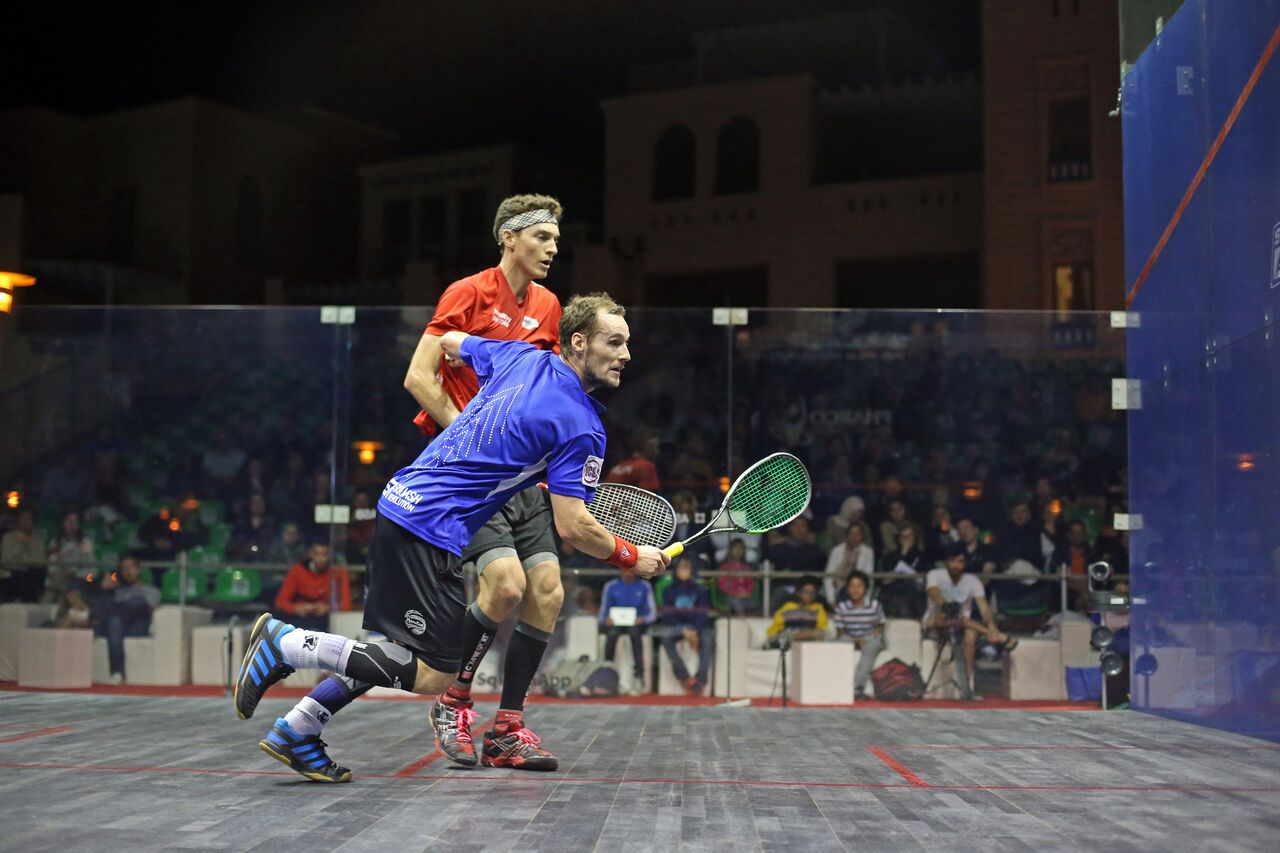By Barry Faguy
HEY REF! What does ‘playing through’ mean?
You’ve no doubt heard the old saying: “You can’t have your cake and eat it too.” Well, with ‘playing through,’ the ‘cake’ is the striker’s right to call a let when encountering interference—and the ‘eat it too’ refers to delaying the call until some time after. You must do one or the other; you either stop and make the request immediately on encountering the interference, or you carry on and thereby forfeit the right to any request for that incident. Any delayed request (essentially a change of mind) typically occurs because the striker, upon reaching the ball, realizes that the return was more dificult than anticipated. Well—no can do!
However, there are a couple of cautions: it’s OK for a player to say “Let,” and then continue through and play the ball just to show the ref that he could make the shot’—essentially trying to ensure that a ‘No Let’ isn’t given. Because play stops at the moment of the call, a player doing this must be aware that the opponent might drop their guard, so any hitting of the ball after the call must be done with great care. Of course, the flip side of the preceding scenario is that the ref might consider the interference to have been pretty much insignificant (“minimal”)—and so, even if the player did in fact demonstrate the ability to return the ball, the ref will justifiably say “No Let,” essentially stating that the striker should not have stopped play.

HEY REF! I’ve been told that, when refereeing, I should be using the ‘minimal interference’ rule to ensure fewer requests for lets. What does that mean?Many players interrupt the game needlessly when they encounter some interference—interference that many would classify as “no big deal.” They do so usually because they are fatiguing and want a break, or because they anticipate a difficult return. This can be very frustrating to an opponent who generally carries on in the face of what is often significant interference.
There are entreaties to referees from all quarters of the sport to make decisions that encourage continuity of play—and the application of the ‘minimal interference’ rule is one of several options available. Essentially, it allows a ref to deny a let to a player who fails to play through an interference that has had no significant effect on his/her ability to get to and play the ball. A useful tip to help you decide that issue when you are officiating, is to ask yourself whether the striker’s return would have been significantly compromised by playing on.
However, a quick caution: do not use this rule for swing interference, because the swing motion is quite sensitive to the smallest deflection and virtually any contact with it will have a disastrous effect. As well, if you think about it, the concept of ‘minimal interference’ cannot be applied to any interference to the flight of the ball to the front wall—because those are potentially strokes.





